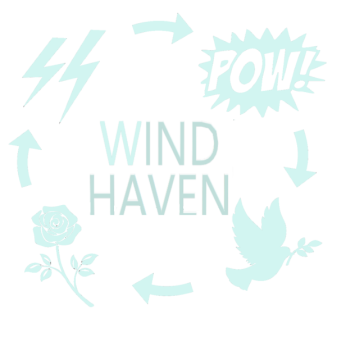Coercive control is a pattern of ongoing intimidation, manipulation, and domination that chips away at a person’s freedom and sense of self. Unlike physical violence, it operates in the shadows—through threats, isolation, gaslighting, and financial control. As a result, victims may feel trapped, constantly walking on eggshells. This hidden form of abuse is often the backbone of toxic relationships, laying the groundwork for deeper harm. Therefore, recognizing coercive control is the first step toward breaking free and reclaiming your power.
Abuse doesn’t always leave bruises.
Sometimes it leaves questions.
Doubt.
Shame.
Also, the haunting feeling that maybe you’re the crazy one.
So, if you’ve ever felt like you were losing your grip on reality — second-guessing your memory, your worth, your choices — you might not be “overreacting.”
You might be experiencing a specific kind of abuse we call coercive control.
This is the subtle, sophisticated side of narcissistic abuse — the part that creeps into your life dressed like love but steals your freedom in small, quiet pieces.
Today, we’re unpacking that slow, calculated erosion — so you can spot it, name it, and take your power back.
What Is Coercive Control?
Coercive control is a pattern of psychological abuse designed to dominate, isolate, and subjugate another person — without ever laying a hand on them. It’s not just “mean words” or a toxic attitude. It’s strategic. Intentional. And often invisible to outsiders.
Additionally, it shows up like this:
- Monitoring your texts and calls
- Controlling who you spend time with
- “Forbidding” you from working or going to school
- Financial sabotage or control
- Making you feel guilty for having needs or boundaries
- Rewriting history or lying with a straight face
- Twisting your emotions until you don’t trust yourself anymore
In short?
It’s not just control.
It’s psychological imprisonment.
Gaslighting: The Brainwashing Behind the Curtain of Coercive Control
One of the most sinister tools in the coercive control toolbox is gaslighting, which is a form of emotional abuse where the abuser manipulates your perception of reality.
They lie, deny, and distort — not just to win an argument, but to slowly wear down your trust in your own mind.
You might hear:
- “That never happened.”
- “You’re just too sensitive.”
- “I think you’re imagining things.”
- “You’re the one with the problem.”
Also, the more you hear it, the more you start to think… maybe they’re right.
But that’s the trap.
Gaslighting isn’t about the truth; rather, it’s about control.
If they can convince you that your memory, emotions, or instincts are unreliable, then they can make you question everything else—even your right to walk away.
In reality, you’re not crazy. Instead, you’re being conditioned.
The Narcissistic Blueprint: What Makes It So Hard to Leave
We toss the word “narcissist” around a lot these days — but let’s get real clear.
Not everyone who’s selfish or toxic is a narcissist. In fact, many people display harmful behaviors without meeting the criteria for narcissistic personality disorder.
And most narcissists? Contrary to popular belief, they’re not all-powerful villains—instead, they’re often insecure individuals who learned to manipulate others as a survival tactic.
Most are just blowhards, not dangerous criminals. But that doesn’t mean their behavior isn’t deeply damaging.
What makes narcissistic abuse so tricky is the cycle of love and harm:
- Love-bombing — excessive flattery, gifts, and attention
- Devaluation — subtle insults, mood shifts, criticism
- Gaslighting — making you question reality
- Discard or Hoovering — suddenly leaving… or pulling you back in with charm and false promises
As a result, this rollercoaster causes what’s known as trauma bonding — an attachment formed through repeated cycles of abuse and reward.
Like an emotional slot machine, you never know when you’ll get love or pain — and that unpredictability keeps you hooked.
Why We Avoid Labels (But Still Teach the Truth)
Here at Wind Haven Foundation, we do talk about narcissistic abuse.
We teach about narcissistic traits, tendencies, and even the clinical definition of NPD (Narcissistic Personality Disorder). Because patterns matter. Safety matters.
But we don’t slap people with labels like they’re name tags.
We believe in naming behaviors — not diagnosing personalities.
Because you are not a psychologist. You’re a person trying to survive.Also, labeling someone as “a narcissist” in day-to-day life can become a weapon — not a wisdom tool.
It’s easy to use it to dismiss someone, dehumanize them, or justify our own unchecked anger.
Instead, we teach:
- Spot the pattern.
- Name the behavior.
- Set the boundary.
- Don’t play the same game…
- But learn to play the game better & the right way.
Empowerment Starts with Education
So, do you want to know how you beat coercive control?
You don’t just break up—instead, you break free. And that journey starts in the mind.
That’s why we created our “Overcomer Reforge” program — to help survivors learn how to:
- Recognize covert manipulation tactics
- Use grey rock and medium chill communication
- Set firm but loving boundaries
- Protect their identity and safety
- Heal without becoming cold or cynical
Here, we help you shift from:
- Confusion → Clarity
- Reactivity → Response
- Fear → Faith
You Are Not What They Said About You
So, if someone made you feel small, unworthy, or broken — hear this:
You are not too much. You’re not too sensitive. You are not hard to love.
You were just in the presence of someone who didn’t know how to honor your light.
And it’s okay to grieve the good moments.
It’s okay to still love them.
It’s okay to miss what you thought it was going to be.
But it’s not okay to keep losing yourself trying to fix someone who benefits from your confusion.
Let’s Move Beyond Labels and Toward Healing
So yes — say “narcissistic abuse” in safe spaces.
Use terms like “gaslighting” when the shoe fits.
Get educated. Get clear.
But don’t stay stuck in the blame game. And don’t slap people with labels you’re not licensed to diagnose.
You’re not here to be judge, jury, and executioner.
You’re here to be free.
💬 Final Word: What Can You Do Now After Coercive Control?
✅ Watch & Learn:
Here are free, credible videos we recommend:
- “What is Coercive Control?” by Dr. Emma Katz – YouTube
- “Gaslighting Explained” by The School of Life – YouTube
- “Understanding Narcissistic Abuse” by Dr. Ramani – YouTube
✅ Sign up for Overcomer Reforge to learn advanced boundaries, emotional detox tools, and how to reclaim your voice.
✅ Email us if you need spiritual, emotional, or educational support. We’re not therapists, but we’re walkers of the hard road — and we’ve got room on the trail for you.
You are not crazy. You’re not weak. You are not alone.
You are more than a conqueror.
You’re an Overcomer. 🛡️🔥












